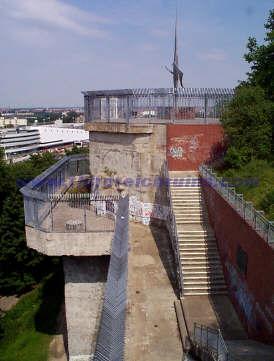Jogging Through History
Old Father Time pays no heed to the ageing process, and despite my best efforts to duck and dive his probing "get old" jabs, he has managed to scar me in several ways. My days of running half marathons, jogging recreationally, and taking a brisk canter to catch the bus were, I thought, a thing of the past when my knees started giving up on me about 2.5 years ago. Pain in my left knee after a swift gallop would leave this old nag lying on the couch with a big bag of ice to curtail the swelling.
On tour I would usually try every other day to go for a run. Not only was it a good way to keep in shape, and fight the tour flab, but the best thing about it was that you got to see more of the city than you would normally do on tour. Running through the backstreets, past major monuments, through beautiful parks, over imposing bridges, gives you more of a flavour of that city than any quick sightings through your tourbus window ever could do.
Over the last couple of months, I started to run on a treadmill in my local gym. To my surprise, I felt no adverse reaction to a 15 minute jog on the machine. Further tryouts gave me faint hope. When I finally picked up the courage to actually run around the fields at the football club I am trainer at, and felt great for it, I once again had hope.
And now, on this Kissogram tour, I even dared to pack my jogging suit into my suitcase with a view to perhaps doing something I love again. And I have. My first attempt at pounding the streets was in Paris. I strove to keep any fear of possible impending pain at bay, and measured my running steps so as not to stumble over paving stones or kerbstones. I feel that if you carry fear of injury or pain in your head that your body reacts accordingly and will allow this to happen. An hour of running through Paris was awarded with an enormous feeling of achievement at the end and a body and mind that leapt for joy knowing that it had overcome an enormous hurdle. Since then, the paving stones of Copenhagen and Berlin have felt the full brunt of 70kgs of athletic prowess. And no pain in my knees!
And so onto the history lesson. Berlin was protected by concentrated anti-aircraft defenses, including three huge concrete flak towers. Flakturm 1 in the Tiergarten was completely destroyed after the war. The massive concrete walls of the front half of Flakturm 3 remain in Humbolthain Park.

 The main gun positions at each corner were for long-range 12.8cm flak guns; the smaller pedestals below were for smaller caliber guns of shorter range. On the left below is a view of Flakturm 3 during its destruction after the war.
The main gun positions at each corner were for long-range 12.8cm flak guns; the smaller pedestals below were for smaller caliber guns of shorter range. On the left below is a view of Flakturm 3 during its destruction after the war.  The aerial view on the left below, from Google Earth, shows the remains of the Humbolthain flak tower today.
The aerial view on the left below, from Google Earth, shows the remains of the Humbolthain flak tower today.
Flakturm 2 was located in Friedrichshain Park. This is where I jogged through today. Following the war it was mostly destroyed and buried in rubble from the bombed city. Today only a small part of one of the upper parapets can be seen above ground.




These structures are / were massive. The Nazis had a plan to use these also as the last place where the population of the town would gather and live in if everything went wrong! From here they would resist all foreign elements and live and fight till the bitter end! If you go to Hamburg, you will find a similar enormous flak tower in the St.Pauli area of town. This building in Hamburg is now a music store! This bunker provided me with a wonderful Joe Meek compressor. Those ol' Germans were actually planning to build music stores and not flak towers. Somehow the original idea got skewered!



